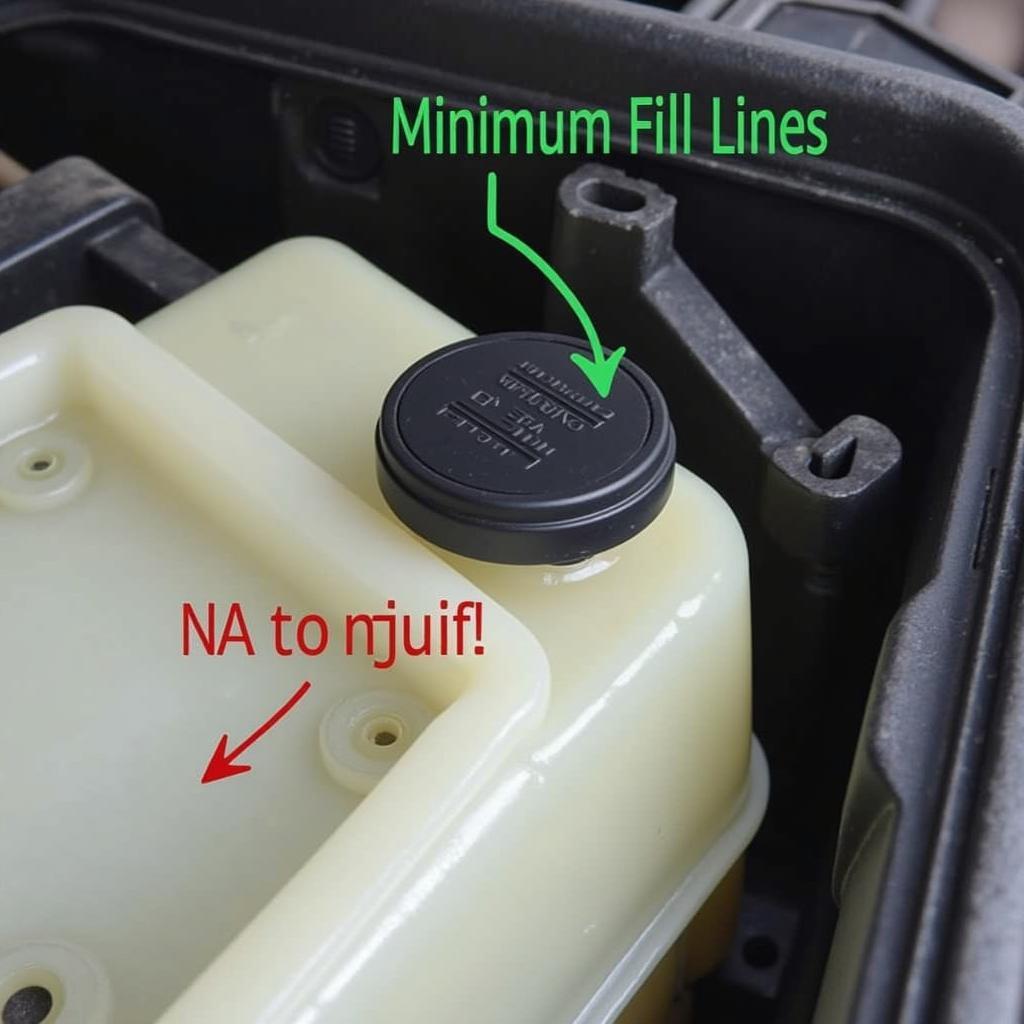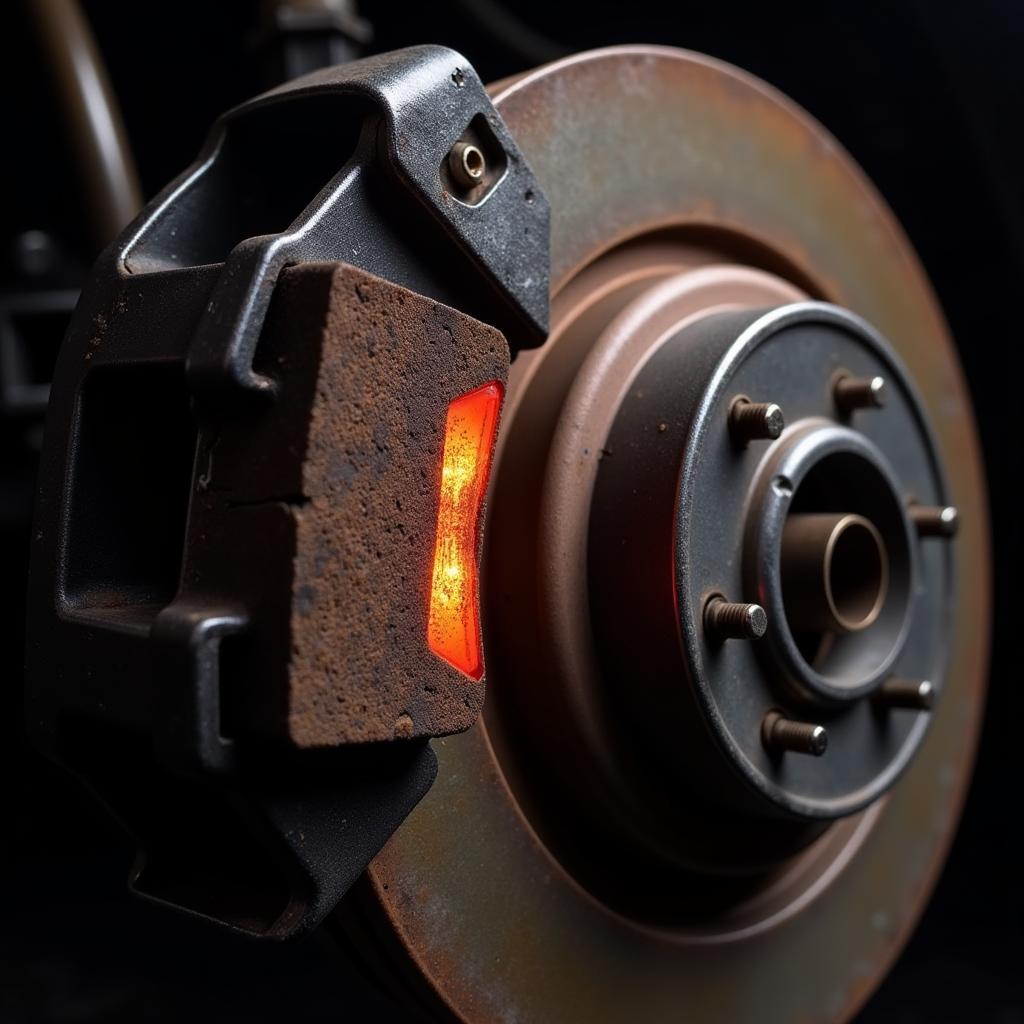If your 2003 Acura TL brake warning light is stubbornly glowing, you’re not alone. This common issue can stem from several culprits, ranging from a simple brake fluid top-up to more complex electrical or hydraulic system problems. This comprehensive guide will illuminate the possible reasons behind that pesky warning light and equip you with the knowledge to address them.
Decoding the Warning: Why is My Brake Light On?
The brake warning light on your dashboard serves as a critical alert system, signaling potential issues within your Acura TL’s braking system. While it can be alarming, remember that early detection is key to preventing more serious problems. Here are the most common reasons why your brake light might be illuminated:
1. Low Brake Fluid:
The most frequent offender, low brake fluid levels can trigger the warning light. As brake pads wear down, the brake fluid reservoir needs to release more fluid to compensate. If the fluid level drops too low, the light will switch on.
2. Worn Brake Pads:
Speaking of brake pads, these hardworking components have a finite lifespan. As they wear down, a sensor embedded within the pad will make contact with the rotor, illuminating the brake warning light. This indicates it’s time for a brake pad replacement.
3. Faulty Brake Light Switch:
The brake light switch plays a crucial role in activating your brake lights when you press the pedal. If this switch malfunctions, it can disrupt the signal, leading to a lit warning light and potentially preventing your brake lights from functioning correctly.
4. ABS Problems:
Your Acura TL is equipped with an Anti-lock Braking System (ABS), a sophisticated safety feature designed to prevent wheel lockup during hard braking. A malfunctioning ABS module or sensor can trigger the brake warning light.
5. Hydraulic System Issues:
The brake system relies on hydraulic pressure to function effectively. Leaks within the hydraulic lines, calipers, or wheel cylinders can lead to pressure loss and activate the warning light.
6. Electrical Issues:
Like any modern vehicle, your Acura TL’s braking system depends on a network of electrical components. Faulty wiring, a blown fuse, or a malfunctioning sensor can disrupt the system and illuminate the warning light.
 2003 Acura TL Brake Fluid Reservoir
2003 Acura TL Brake Fluid Reservoir
Diagnosing the Problem: Getting to the Root Cause
While a glowing brake warning light might seem daunting, pinpointing the exact cause is crucial for effective repair. Here’s a step-by-step approach to diagnose the issue:
-
Check the Brake Fluid: Begin by inspecting the brake fluid level in the reservoir. If it’s below the “MIN” mark, adding brake fluid might temporarily resolve the issue. However, persistent low fluid often points to a leak, requiring immediate professional attention.
-
Inspect the Brake Pads: If your brake pads are visibly worn or nearing the end of their lifespan, replacing them could be the solution. However, if the pads appear fine, further investigation is necessary.
-
Examine the Brake Light Switch: Locate the brake light switch, typically situated above the brake pedal. Depress the pedal and listen for a distinct clicking sound. If the switch fails to engage or produces a faint or inconsistent click, it might need replacement.
 Worn Brake Pad Sensor on 2003 Acura TL
Worn Brake Pad Sensor on 2003 Acura TL
- Consider Professional Diagnostics: For complex issues like ABS problems, hydraulic system leaks, or intricate electrical malfunctions, seeking professional diagnostics is highly recommended. Certified technicians possess the expertise and specialized equipment to accurately diagnose and repair these problems.
When to Seek Professional Help
While some brake warning light issues can be addressed with basic troubleshooting, certain situations demand professional intervention. If you experience any of the following, consult a qualified mechanic immediately:
- The brake pedal feels soft or spongy.
- You hear unusual noises when applying the brakes, such as grinding or squealing.
- Your vehicle pulls to one side when braking.
- The brake warning light remains on even after adding brake fluid.
Preventing Future Issues: Proactive Brake Maintenance
Proactive maintenance is crucial for a healthy and reliable braking system. By following these preventative measures, you can significantly reduce the risk of encountering brake warning light issues:
- Regular Brake Inspections: Schedule routine brake inspections, ideally every 12,000 miles or as recommended in your Acura TL owner’s manual.
- Timely Fluid Flushes: Replace your brake fluid every 24,000 miles or two years to maintain optimal performance and prevent corrosion within the system.
- Quality Brake Pads: Invest in high-quality brake pads from reputable manufacturers. Not only will they last longer, but they’ll also provide superior braking performance and minimize wear on other brake components.
 Professional Inspection of a 2003 Acura TL Brake System
Professional Inspection of a 2003 Acura TL Brake System
Conclusion: Addressing the 2003 Acura TL Brake Warning Light
A glowing brake warning light in your 2003 Acura TL is a clear signal that something within your braking system requires attention. By understanding the potential causes, utilizing the provided diagnostic steps, and knowing when to seek professional help, you can address this common issue promptly and confidently. Remember, proactive maintenance and timely repairs are essential for preserving the safety and reliability of your Acura TL’s braking system.

